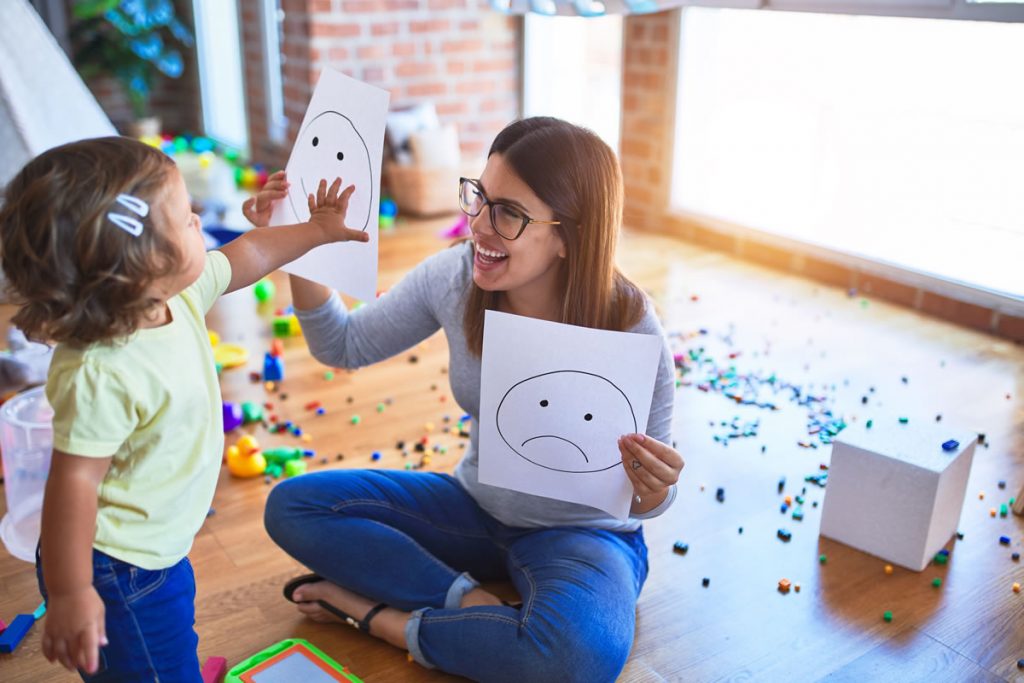Most educators agree that children’s emotional well-being contributes greatly to their social and intellectual development . However, we adults often end up denying or nullifying children’s feelings by saying things like: “You shouldn’t feel like this!” or “You’ll be fine. Forget it ”or“ It was nothing, don’t cry ”.
Denying children’s strongest and most complex emotions can lead to fear, confusion, shame, or resentment, which can interfere with their learning. When the so-called “negative” emotions are suppressed, problems of non-assimilation generally reappear , which can even be well past time. In contrast, children who are taught to positively identify, express and cope with their feelings develop useful life skills and are better able to cope with their negative emotions without associated repercussions.

Although we have a certain mania for labeling things, human beings experience a variety of emotions that cannot be classified as right or wrong, and this is important to let children know as well. What should really matter to us, in terms of emotions and feelings, is that everyone (and especially children) is capable of managing their feelings. Children learn by observing the significant adults in their lives: parents, grandparents, siblings, uncles, teachers … and that is why the role we play in this regard is so important.
For example, adults who honestly express their feelings constructively foster children’s emotional growth at the same time, and when educators work on self-understanding and emotional maturity, their students are more likely to do the same.
Other ways to improve children’s emotional development
- Help children understand their feelings by using books, board games, puppets, interactive stories, or role-playing games.
- It teaches children to identify and verbalize their feelings, as well as to read and be able to identify and understand the emotional signals of other children and adults.
- Look at a child’s facial expressions, posture, play, or artwork for signs that they are experiencing strong negative emotion. Then offer constructive ways to defuse these strong or negative emotions , such as painting, talking, or taking a “time out.”
- Always accept emotional responses as legitimate, even if you don’t like the behavior that produces the feeling. For example, when a child hits something, his feeling of anger is shown. If that happens, then stop the child and say, “It’s okay to feel angry, but it’s not okay to hurt others. Tell me about your feelings ”.
- It communicates understanding and empathy by reflecting the observed emotion . For example, say: “You look sad” or “You seem upset.” Then, if the child confirms your intuition and begins to speak, remain silent and listen.
- Also observe the child’s non-verbal behavior for clues about how he is feeling. Also listen to the content of what it says carefully.

- Avoid saying negative things like, “Can’t you do anything right?” or “What is your problem?” These comments discourage open communication and suggest that when a child does not behave perfectly, he or she is a “bad” child.
- Avoid moralizing (“That was wrong!”); say or do humiliating things (“I can’t believe you did that”); lecture (“You should have known or done better”); deny the emotion (“You will be fine”); show excessive compassion (“Poor thing, it’s all their fault”); or solve it yourself (“I’ll take care of it”). Instead, listen patiently and nod your head appropriately . Remember that questions can often take a child away from the real problem or cause him to stop talking.
- Keep the lines of communication open at all times, as this will show that you are concerned about the children’s feelings and that you are a true help and emotional support : “I know you have had a bad time because I care about you. I’ll always be there for when you need to talk ”…
- Solving problems with the child by encouraging him to think of options and decide which constructive action to take is the best option, don’t forget!











































































































